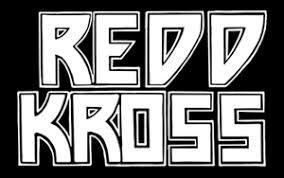#NPI
Text

head tilted down, knees on the ground…
#comfort album of all time#twenty one pilots#21 pilots#21p#tyler joseph#twentyonepilots#josh dun#tøp#top#no phun intended#npi
70 notes
·
View notes
Text

5 notes
·
View notes
Text
"the young boy moves so fast he doesn't see the stars above, and all his dreams are crushed by old men who didn't dream enough" i love tyler joseph's songwriting so damn much
14 notes
·
View notes
Text
New Product Introduction
Learn more about how we can help with your New Product Introduction. Book A Knowledge Session
#electronics manufacturing services#electronic manufacturing services#electronic manufacturing services companies#electronics manufacturing services India#electronics manufacturing services chennai#top Ems companies in India#bestEmscompanies in India#EMS#NPI#New Product Introduction
2 notes
·
View notes
Text
An article just came out in the New Yorker using the term "immunity gap" and linking to a Lancet paper using the same.
The article above, via the Association of Health Care Journalists, explains what this term actually refers to and why it's often misused / misunderstood.
The piece is short and I always recommend reading the whole thing. But, some excerpts:
Key takeaways
“Immunity debt” is not an established epidemiological term and is problematically being used to mean different phenomena.
The current caseload of flu, RSV and COVID-19 infections is not occurring because people’s immune systems were weakened from lack of exposure to pathogens during mask-wearing and social distancing.
Accurate use of the term immunity debt (or in some cases is called “immunity gap”) refers to the idea that masking and social distancing temporarily held off infections, which are now occurring as population behavior allows the greater spread of pathogens.
A problematic aspect of using the term is its implication that a disease must be “paid back,” which is inaccurate.
The best journalistic practice is not to use the term “immunity debt” at all except in clarifying how it’s being misused
...
As the number of hospitalized children with influenza, RSV, COVID-19 and other infections continues to soar, multiple media outlets have published stories suggesting one of the causes of the severity of illnesses is “immunity debt,” because of social distancing and masking measures taken during the height of the pandemic.
But infectious disease experts say the media should be very cautious about using “immunity debt” since it is not an established term in epidemiology.
“Immunity debt” has been used to describe a real phenomenon that is playing a role in the high volume of RSV cases, but it’s also been used to describe a spurious idea that it is causing respiratory illnesses to be more severe.
Since the term has been used for two different ideas — one supported by evidence and one not supported by evidence — it’s best for reporters to avoid using the term altogether, or at the least, very clearly define it if it must be used in a story.
...
There is no evidence that those interventions [like masking, social distancing, etc.; referred to as NPIs — non-pharmaceutical interventions] weakened the immune system and made people more susceptible to disease today than they otherwise would have been.
Public health officials are concerned that the media usage of “immunity debt” is being confused to mean that children’s immune systems were weakened due to lack of exposure to pathogens, an idea which is bolstering arguments by those who oppose masks and vaccinations and instead argue that children need to be exposed to pathogens to strengthen their immune systems.
For context, the term “immunity debt” is a social media construct. ...
Many people’s immune systems may indeed be weaker since the pandemic, but not because of lack of exposure to viruses, but rather because of exposure to SARS-CoV-2, the virus that causes COVID-19. A growing number of studies have concluded that the virus can actually impair the immune system and make it harder to fend off other pathogens.
...
People may have gotten the unsubstantiated idea of “immunity debt” from the emergence of the controversial hygiene hypothesis, which argued that children may be more susceptible to allergies and asthma because their home environments are too clean, and kids just need to play in dirt to be exposed to environmental microbes.
“The argument there is let your kids play in the dirt. Let them get exposed to microbes. It’s not ‘let them run around in a biohazard lab,'” Gregory told Salon. “Suggesting that unless you’re getting infected regularly with pathogenic viruses, your immune system will be weakened, just runs into a logical problem.”
Some articles, such as this one by Johns Hopkins Amesh Adalja, M.D., use the term to describe the accurate, evidence-based reason that we’re seeing a higher number of respiratory virus illnesses right now, especially RSV. Nearly all children are exposed to RSV by age 2, develop an infection, and subsequently develop a weak immunity to RSV. For the past two years, however, far fewer children have been exposed to RSV because of distance learning, lower daycare use, social distancing and mask-wearing.
The bottom line
Now that children are behaving more like they were pre-pandemic, the infections they would have had then are catching up now — it’s a delay in infections. ... the cases are bunched up.
Therefore, the “debt” is the lack of infections due to simple lack of exposure to pathogens at all, not because of weakened immune systems from lack of exposure. As science communicator Edward Nirenberg noted on Twitter, the biggest problem with the term “is it suggests you need to get sick to stay healthy,” which has no scientific basis. Virologist Ian Mackay has also explained nicely the reason for so many respiratory cases right now in his short Twitter thread.
3 notes
·
View notes
Audio
7:51 PM EDT August 20, 2022:
Redd Kross - “my secret life demo (Master)”
From the album NPI
Last song scrobbled from iTunes at Last.fm
4 notes
·
View notes
Text




The Gworls!! I could cry I was so worried it’d take so long to draw portraits for them and yet here I am 😭🤧
in order (left to right): Sage Alyonushka, Nephelai Keyarah, Priestess Zaira and Neophyte Iah
#original character#my ocs#oc art#oc artwork#oc artist#I was so lost in the sauce I forgot I get to enjoy the food too 😭😭😭🤧#this is the most satisfying meal I’ve had in ages tbh#next up is The Guys and then cover arts#oc: sage alyonushka#ttf#oc: keyarah harris#otts#oc: priestess zaira#sb#oc: consort iah#npi#ishizusart#through the fire#seance bride#off to the side#neophyte iah#I’m very happy about this#I can’t wait to see them lol can they write their own webcomics and become graphic novels by themselves now lol I’ve done all I can
1 note
·
View note
Text
youtube
1 note
·
View note
Text
One Renewable Energy Stock for a Green Investment Roll
Renewable energy stocks have faced challenges in gaining the traction investors initially anticipated. Despite the slow pace of the transition, the sector remains crucial for the future. As investors seek alternatives, it's essential to consider renewable energy stocks that offer passive income through dividends. This brings us to Northland Power (TSX:NPI), a renewable energy company with the potential for substantial gains in the coming year.
Overview of NPI Stock
Northland Power is an independent power producer with a focus on building, developing, owning, and operating clean energy projects. The company operates across various regions, providing geographical diversification for investors. Its portfolio includes clean electricity generated from wind, solar, hydropower, and clean-burning natural gas. With operations spanning North America, Europe, Latin America, and Asia, Northland Power ensures a broad market presence.
Challenges Faced by Northland Stock
Despite its promising prospects, Northland Power has faced challenges in recent years. The renewable energy sector experienced slower growth than expected, compounded by higher interest rates and inflation. The company also grappled with breakdowns in its wind farms, leading to costly replacements. However, Northland Power has managed to navigate these challenges and recently surpassed earnings estimates during its latest quarter.
Recent Financial Performance
In its third-quarter report, Northland Power witnessed a decrease in sales from $556 million in 2022 to $513 million. Profit also declined from $484 million to $458 million, with adjusted EBITDA dropping to $267 million from $290 million. The company attributed part of this decline to a significant spike in market prices in Europe in 2022. Despite these challenges, Northland Power achieved financial close on two offshore wind projects, Hai Long and Baltic Power, showcasing its ability to navigate complex, large-scale projects in multiple jurisdictions.
Future Outlook
Looking ahead, Northland Power appears poised for a brighter future, making it an attractive long-term investment. Investors can enjoy passive income through dividends in the interim, with the potential for substantial returns in the long run. While the stock currently trades at 15.38 times earnings, boasting a 5.09% dividend yield, it presents an opportune moment to consider Northland Power. Shares have already increased by 22% since hitting October lows, signaling positive momentum.
Conclusion
As the renewable energy sector continues to evolve, Northland Power stands out as a promising player. Despite recent challenges, the company's strategic milestones and global presence position it for success in 2024 and beyond. For investors seeking a blend of dividends and capital appreciation, Northland Power could prove to be a major winner in the coming year.
0 notes
Text
Potaş Çelik Pazarlama
http://www.potascelik.com
#Potaş Çelik Pazarlama#Demir#Boru#profil#lama#sac#NPU#NPI#HEP#Köşebent#Galvaniz#DKP#Trapez#Spiral Sarımlı Borular#inşaat demiri#nervürlü inşaat demiri
0 notes
Text
downloaded SoundCloud so I could listen to npi while driving. I usually use YouTube but I cannot skip the five minute long ads while driving >:(
0 notes
Text
youtube
https://www.futureelectronics.com/m/bulgin. Bulgin IP67 Enclosures designed for use with control switches and electronic equipment. With robust ABS plastic, these IP rated waterproof and dustproof plastic enclosures are ideal solutions for providing protection to electronic components and systems that are exposed to harsh environmental conditions. https://youtu.be/PTvhQAoRqNM
#Monolithic#Power Systems#MP2760#MP2651#NPI#MP2760 NPI#MP2651 NPI#integrated FET buck-boost chargers#dual-role USB PD 3.0 support#USB PD power banks#TQFN-30 package#Integrated switching FETs#Youtube
1 note
·
View note
Text
you know what sometimes all you need is to listen to no phun intended and cry a little, as a treat
#like fuck#i don't think any album hits as hard for me#like drown? blasphemy? save? hear me now? hole in the ground? they all kill me inside#like it hurts to think of tyler writing and singing these as a 18#~18 year old so fucking hard#and it hurts that they once held me up#and fuck they still do hurt lmao#but like in a better way i think#no phun intended#npi
5 notes
·
View notes
Text
youtube
https://www.futureelectronics.com/m/monolithic-power-systems. The Monolithic Power Systems MP2760 and MP2651 are 5V to 21V, 6A, integrated FET buck-boost chargers capable of supporting 1 to 4 cells in series. As the lowest RDS(ON) integrated FET buck-boost chargers on the market, offering excellent thermals for fast charging applications. https://youtu.be/VXHEHaQs_Zc
#Monolithic#Power Systems#MP2760#MP2651#NPI#MP2760 NPI#MP2651 NPI#integrated FET buck-boost chargers#dual-role USB PD 3.0 support#USB PD power banks#TQFN-30 package#Integrated switching FETs#Youtube
1 note
·
View note
Photo

#photography @520_igarashi #model @harupe517 @image_models #styling @hiromi_takeuchi_ #Hair @kiyoigarashi #makeup by me @chifumi325 ありがとうございました* @520_igarashi @npi_photo @shinya_uchiyama #beauty #eyes #photography #fashion #photoshoot #npi https://www.instagram.com/p/Cgb1SKAvqdk/?igshid=NGJjMDIxMWI=
0 notes
Video
youtube
12:45 AM EST November 20, 2022:
Redd Kross - "Star Lust"
From the album NPI
Last song scrobbled from iTunes at Last.fm
---

0 notes